climbing hydrangea
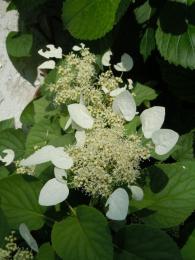
The decorative properties of this liana-like plant have long won the hearts of not only amateur gardeners, but also professional landscape designers.
Content:
Description
Curly hydrangea is a climber - in natural conditions the plant climbs up nearby trees. This becomes possible due to the presence of adventitious roots in hydrangea, which are securely attached to the surface of the support. Thus, the vine can grow up to 20 meters in height. Therefore, it is perfect for landscaping vertical surfaces.
The plant is deciduous. The leaves are long-petiolate, opposite, round or ovate, with a sharply serrated edge. The upper edge of the leaves is dark, light green below, turning golden in autumn (if they are not exposed to frost). On the branches, the bark peels off in thin layers, but this quality does not in any way affect the neatness of the hydrangea.
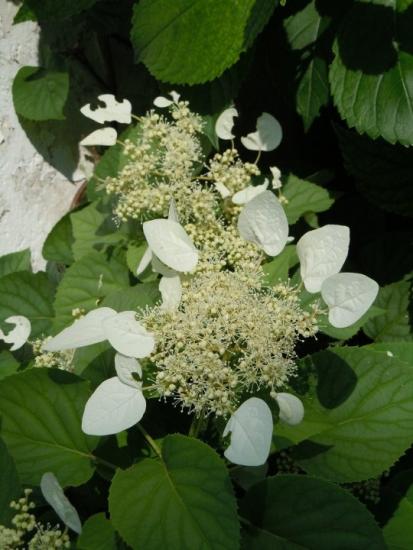
In our conditions, Hydrangea petiolaris reaches 3 m; larger specimens are rare. Wind-resistant, tolerates air pollution well. Winter hardiness is quite good; sometimes young shoots are damaged in severe frosts, which are easy to trim without damaging its appearance.
You can enjoy hydrangea blooms in the summer for about several weeks. From about the beginning of June-July, the plant is covered with large, up to 20 cm in diameter, loose inflorescences strewn with small white-pink flowers.The inflorescences contain numerous sterile flowers with a diameter of 3 cm, and there are few fruit-bearing flowers with fused petals at the top.
Climbing hydrangea flowers are endowed with a wonderful aroma that attracts not only people, but also honey insects.
Trimming
However, to achieve the best decorative effect, the plant needs correct pruning. Those shoots that are characterized by active growth should be removed without a twinge of conscience. Powerful growths are also pruned, and they do not forget to guide and tie up young shoots, which will ensure maximum coverage of the selected surface.
Care and reproduction
Hydrangea originally grew in forests in East Asia, which means that the plant prefers partial shade or shade and acidic, moist soil. It reacts poorly to dryness and alkalization of the environment and does not like soil compaction. Before planting, the soil is enriched with organic matter, and if the soil is dense, then peat or fine expanded clay is added.
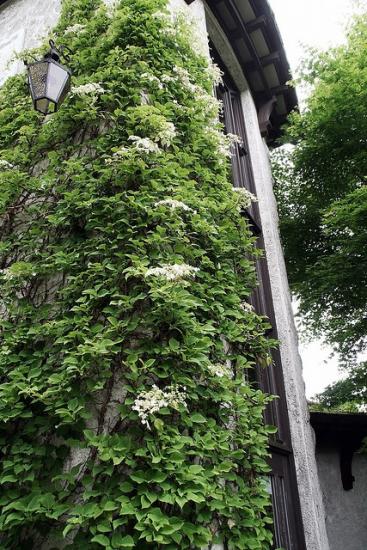
If a climbing hydrangea does not find support for itself, it will easily turn into the form of a ground cover plant. Moreover, at the beginning of spring, its shoots will shorten slightly, which will provide it with better branching and abundant flowering.
Climbing hydrangea reproduces as paniculate and tree hydrangea: cuttings, dividing the bush and offspring. New varieties, of course, are bred by seeds, but for hobbyists this method of propagation is rare.
Due to the significant need for water, it is better to plan planting away from fruit trees and shrubs. They also don't like competition for water, as paniculate species. It is better to cover the ground around the plantings with a thick layer of organic mulch, which over time will provide additional nutrition to the plant.Apply mulch after the soil warms up in the spring.
Design
Since this hydrangea is very wind-resistant, it is used for zoning the site. It looks great on pergolas and arches, separating not only different zones, but also creating visual accents.
The fact that this vine is not very tall in our conditions is an advantage - high, barely visible living walls are not always needed for zoning. It is quite enough to make a partition behind which the following garden “rooms” are visible, because there should always be intrigue in gardens.
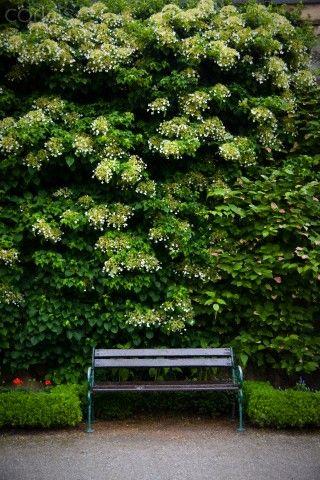
Also it is used for landscaping walls, fences, balconies and gazebos, if the height of the supports and gratings is small. Climbing hydrangea can also be used as a cover crop. Unlike paniculate hydrangeas, climbing hydrangeas are more demanding on lighting, so in partial shade it can produce very weak flowering.
If partitions, pergolas and arches are oriented south-north, then they can be planted with decorative flowers and shrubs on both sides, creating tiered plantings. Compositions made from daylilies, peonies, knotweed, black cohosh, lady's mantle and garden geranium will be good and durable.
And if the support with climbing hydrangea is placed in the west-east direction, then it is better to position the layering of beautifully flowering crops on the south side, and plant shade-tolerant crops on the north side. For example, a group of hostas, ferns or astilbe.
Thanks to its calm, unobtrusive decorative nature, climbing hydrangea is increasingly finding its fans in personal plots. It is durable, perfectly zones the territory, and is an excellent background for flowering and decorative deciduous crops.

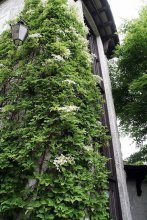

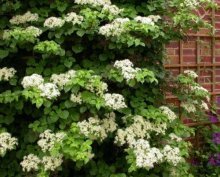

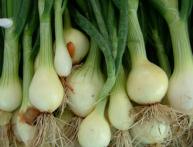
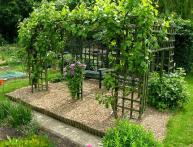



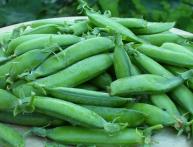
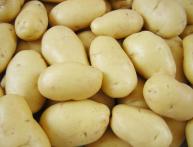
Comments
This is the first time I have read about this variety of hydrangea, although almost all my friends have hydrangea as a houseplant. But I would like to have such a miracle in my garden.
Wow! What an interesting plant, judging by the photo it somewhat resembles a flowering bird cherry. I think that it will be quite difficult to grow it in the Siberian regions, given our difficult climate.